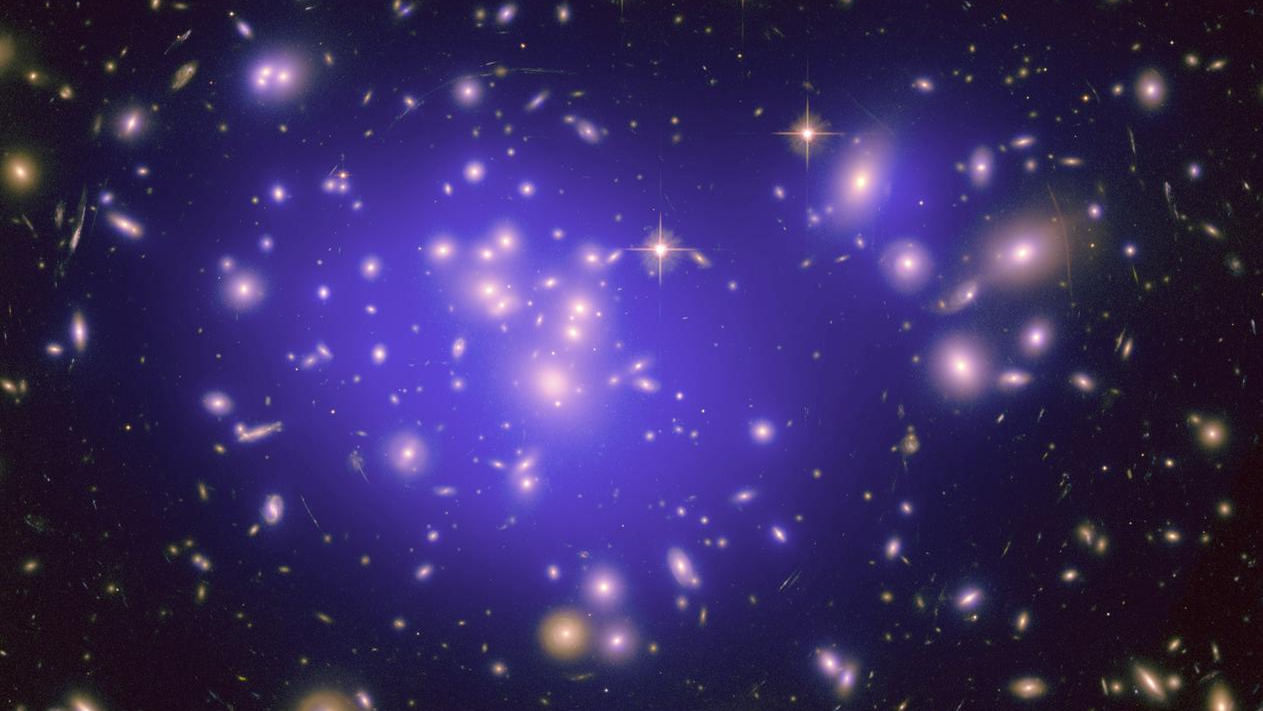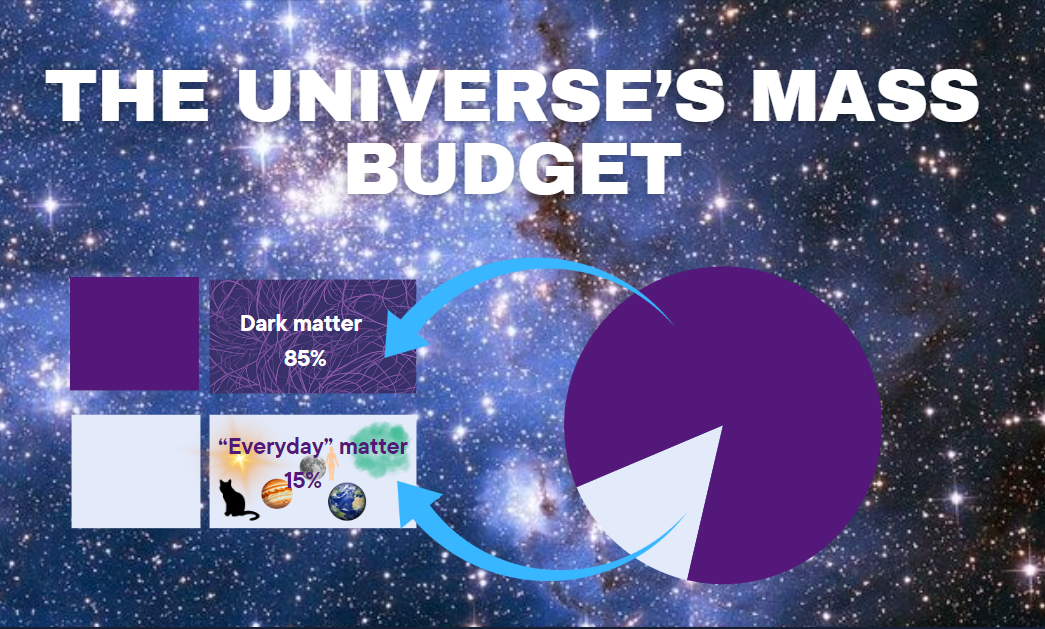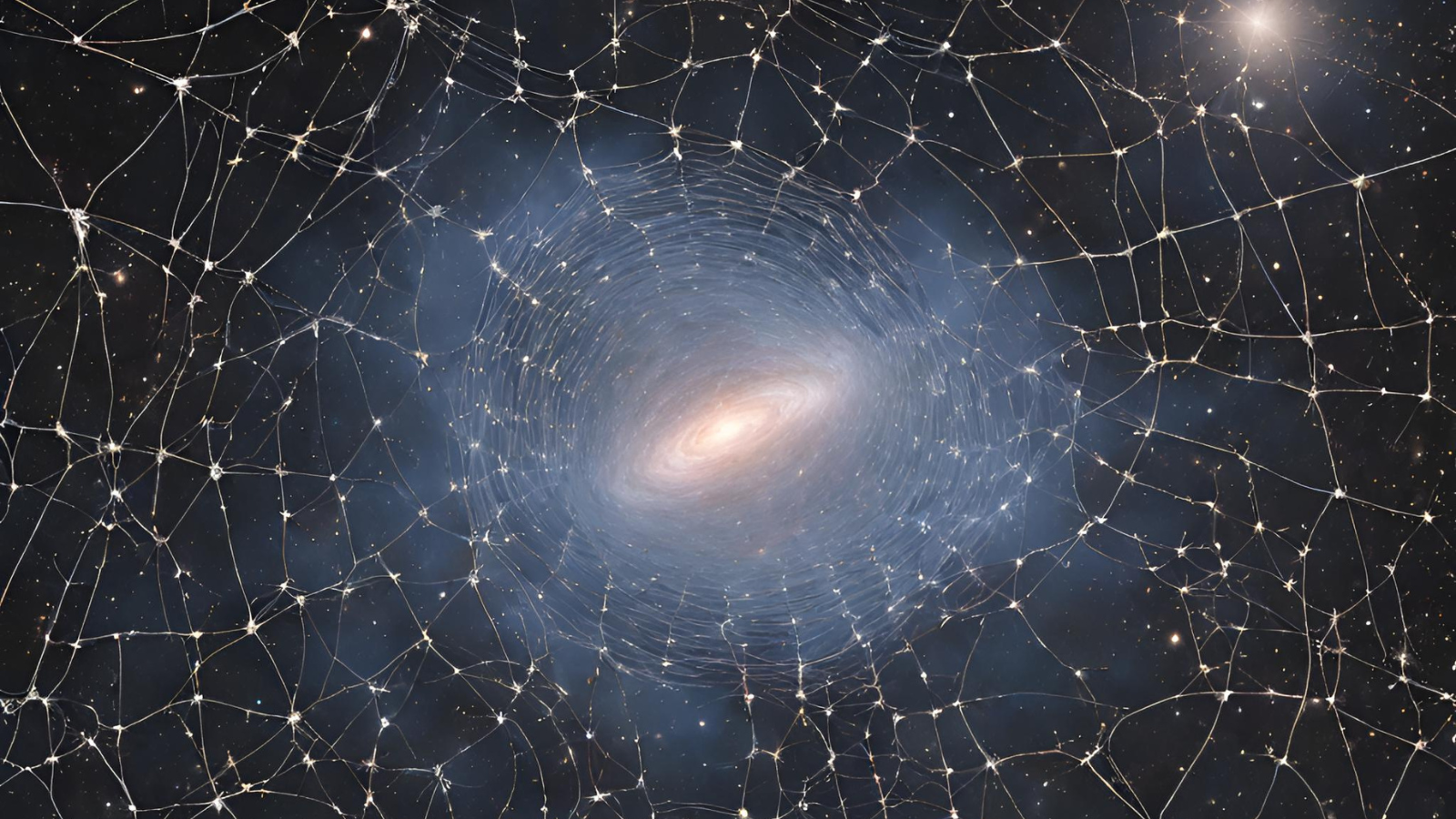Could galaxy cluster collisions be used as dark matter detectors?
Does dark matter interact with itself? The answer may lie in vast clusters of colliding galaxies.

Dark matter is notoriously antisocial, refusing to interact with light and "normal" matter, making it effectively invisible. But what scientists aren't sure about is if dark matter interacts with itself.
If whatever particles make up dark matter do self-interact by colliding, and possibly even annihilating one another, new research suggests that clusters of galaxies could be used as natural dark matter colliders. This dark matter detection method would hinge on two of these vast groupings of galaxies meeting and smashing into each other.
As these galaxy clusters are packed with dark matter, astronomers could examine these cosmic crash sites to spot possible signs of dark matter interacting with itself.
While such a clue wouldn't tell us exactly what particles make up dark matter, it would help eliminate dark matter models that don't allow for self-interaction, bringing researchers closer to the true dark matter candidate.
"Galaxy clusters are also dominated by dark matter," Jacqueline McCleary, assistant professor of physics at Northeastern University, said in a statement. "Eighty to 90% of their mass is dark matter, and the more massive an object is, the faster the constituent dark matter particles will be moving. You’re essentially studying very high-energy collisions."
Related: Dark matter could play 'matchmaker' for supermassive black holes
Are dark matter particles antisocial 'cosmic ghosts?'
The lack of interactions is one thing that makes dark matter so challenging to understand. Despite composing more than 80% of ther material universe and providing the gravitational influence that literally prevents galaxies from flying apart, dark matter is effectively invisible because it doesn't interact with light. Likewise, dark matter particles slip through matter particles like cosmic ghosts.
These antisocial properties have led scientists to realize that dark matter can't be made of atoms comprised of electrons, protons, and neutrons, which do interact with light and with each other. This has sparked the search for a viable dark matter candidate particle.
Breaking space news, the latest updates on rocket launches, skywatching events and more!
"Everything in the universe is a particle and a wave and a field, so the baseline [assumption] is dark matter must be a particle," McCleary said. "The question is, what kind of a particle, as a 'particle' is very vague."
The candidate particles range from hypothetical "Weakly Interacting Massive Particles" or "WIMPS" to "MAssive Compact Halo Objects" or "MACHOs" (we see you, scientists), to tiny, near massless particles called axions or sterile neutrinos. Even tiny black holes left over from the Big Bang called primordial black holes, have been tipped as dark matter candidates.
The problem is, all of these suspects have defied detection and thus remain frustratingly hypothetical.

The phantom-like nature of dark matter means we can't just load dark matter particles into a particle accelerator on Earth, such as the Large Hadron Collider
(LHC), to smash them together and determine their composition.
So, while the LHC has cracked some of the secrets of the so-called "standard model of particle physics" by breaking apart protons and watching the showers of particles that ensue, dark matter, which lies beyond that model, seems to be off the table for the world's most powerful particle accelerator.
The only way we can actually infer the presence of dark matter is through the one interaction it seems to engage in. Dark matter has mass, and therefore it warps space-time (a four-dimensional unification of time and space), which gives it a gravitational influence.
That influence can tell everyday matter and light how to move, and we can detect that. It's through this indirect approach that we know galaxies are surrounded by vast haloes of dark matter, and that dark matter also exists in copious amounts near galaxies' cores.
Scientists also theorize that when galaxies group together in vast clusters, this is the result of vast tendrils of invisible dark matter that spread through the universe like the invisible web spun by a cosmic spider. This cosmic web also helps single galaxies to gather mass and grow, as its gravitational influence draws in ordinary matter.

McCleary and colleagues suggested foregoing a human-made particle accelerator in favor of a natural one. They reason that if galaxy clusters and the dark matter carried with them collide with enough force, detectable dark matter interactions can occur — if indeed dark matter interacts with itself.
These interactions could be as simple as dark matter particles colliding and bouncing off each other, or they could result in mutual annihilation and a flash of energy. When particles and antiparticles — say, an electron and its antiparticle, called a positron — meet, they destroy each other, and the energy they contain is released. Some dark matter models suggest that it is its own antiparticle, meaning one form of interaction could be self-annihilation caused when two dark matter particles meet.
To test this idea, the team created simulations of galaxy cluster collisions on computers powerful enough to examine the collisions down to particle-particle interactions. This required programming the simulation with physical models of interactions between stars, gas and dark matter.
By using this simulation and others like it, scientists could build a roadmap for observing real dark matter collisions. From there, researchers could gather clues that help them determine some of the baseline characteristics a hypothetical dark matter particle would need to possess. This could narrow down the dark matter suspects.
"If you can measure some self-interaction, or if you can place some upper limit, you are ruling out or ruling in classes of particles that dark matter could be," McCleary said. "If you measure some self-interaction, then you bring in another class of particles. You allow another class of theories.
"What this paper is also saying is that if you study a set of, say, 100 galaxy clusters that are merging, you have a chance of measuring the self-interaction of dark matter to some threshold."
"It seems counterintuitive at first because we always want a positive answer: What is it?" McCleary concluded. "But in this case, we’re sort of forced to say, What isn’t it? It is a process of elimination."
The team's research was published in April in the journal Monthly Notices of the Royal Astronomical Society.
Join our Space Forums to keep talking space on the latest missions, night sky and more! And if you have a news tip, correction or comment, let us know at: community@space.com.

Robert Lea is a science journalist in the U.K. whose articles have been published in Physics World, New Scientist, Astronomy Magazine, All About Space, Newsweek and ZME Science. He also writes about science communication for Elsevier and the European Journal of Physics. Rob holds a bachelor of science degree in physics and astronomy from the U.K.’s Open University. Follow him on Twitter @sciencef1rst.
